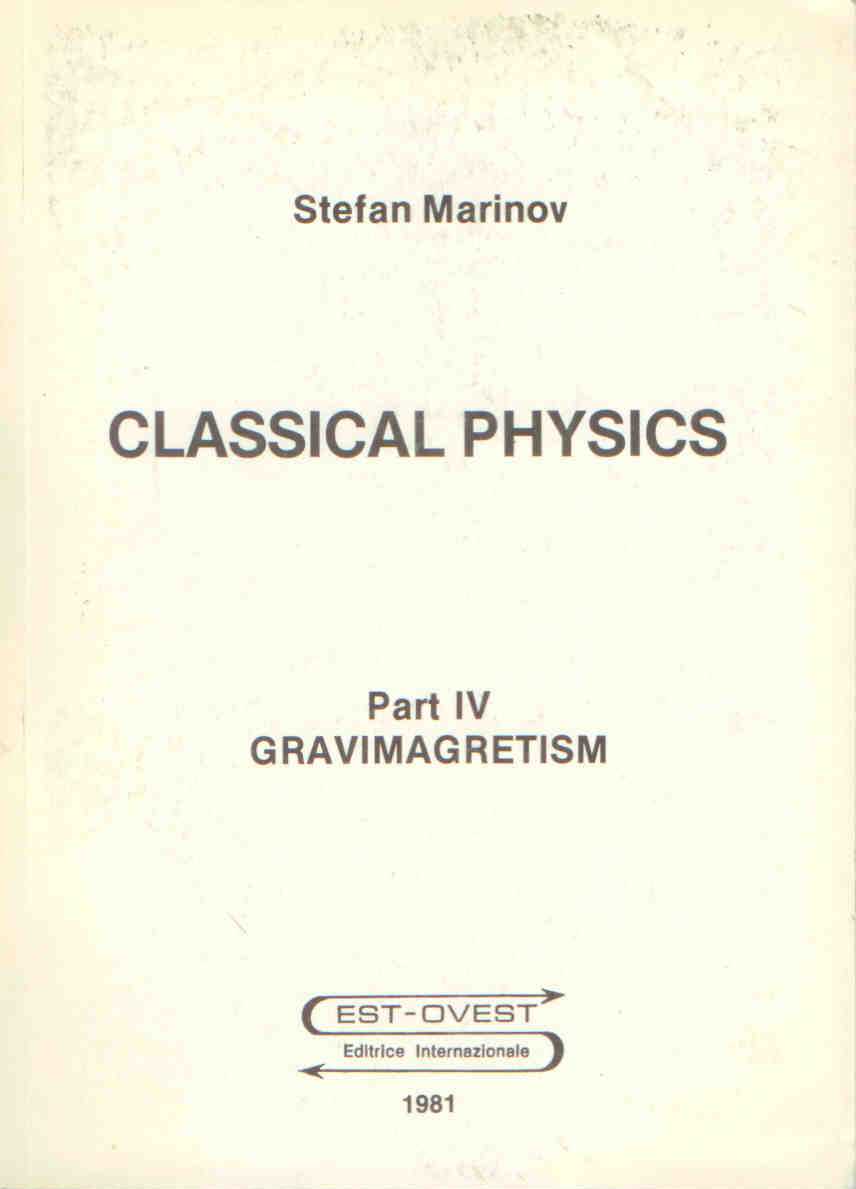Classical Physics, Part IV: Gravimagretism
GRAVIMAGRETISM represents Part IV of Marinov?s encyclopaedic CLASSICAL PHYSICS. In Marinov?s absolute space-time theory the gravitational phenomena are considered by analogy with the electromagnetic phenomena. Aiming to obtain a complete mathematical similarity in the gravitational and electromagnetic theories, Marinov introduces hypothetically the magretic energy as a space-time companion to the space gravitational energy, in the same manner as magnetic energy is a space-time companion to the space electric energy. For this reason Marinov re-names the gravitational theory "gravimagretism. Until today experiments have not given proofs about the existence or non-existence of magretic energy. Such an experiment (the "cauldron" experiment) is proposed by Marinov in Part V. The results of Marinov?s accelerated "coupled-mirrors" experiment (described in Part III) shows that Einstein?s principle of equivalence is not valid, i.e. one can make an experimental distinction between a kinematic and a gravitational acceleration. Marinov?s high-velocity experiments lead to the conclusion that our universe is static as a whole. Thus Marinov considers the "red shift" of the galaxies as a gravitational effect and not as a Doppler effect due to the "escaping velocities" of the galaxies. Marinov shows that the gravitational treatment of the "red shift" leads to a quadratic dependence on the distance to the galaxies and not to a linear dependence as one obtains at the Doppler treatment. The observational data fit better to a quadratic dependence and not to a linear dependence as was established previously by Hubble.



